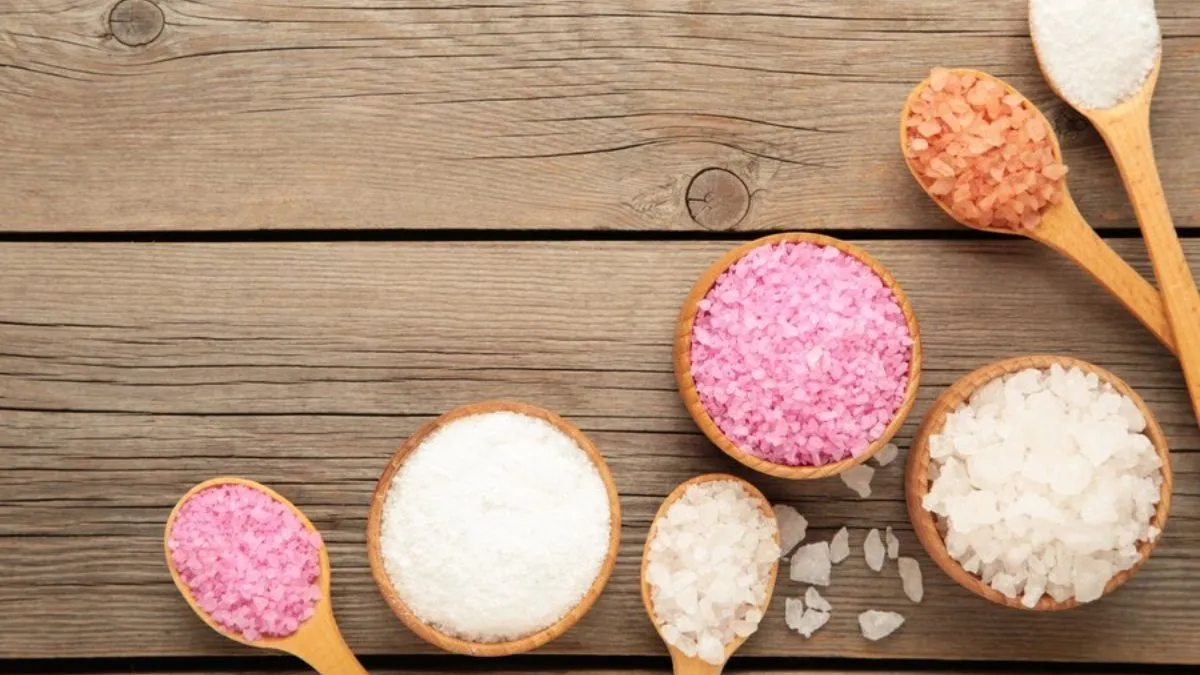
Salt is an essential part of our diet and plays a crucial role in maintaining bodily functions such as fluid balance, nerve transmission, and muscle contraction. But with so many varieties available, choosing the right salt can be overwhelming. From the classic table salt to the trendy pink Himalayan salt, each type offers unique characteristics and health implications.
Table of Content:-
We spoke to our expert, Dr Bhumesh Tyagi, Consultant- General Medicine and General Physician, Shardacare - Health City, and here’s a guide with a pros and cons breakdown to help you make an informed choice for optimal health. Let’s understand each type singularly to make an informed decision.
Table Salt
Table salt is the most common and widely used type of salt. It is highly refined and often includes anti-caking agents to prevent clumping in the blood streams. Most table salt is fortified with iodine, which is a mineral essential for thyroid health and hormone production.
Pros Of Consuming Table Salt
- Readily available and affordable.
- Fortified with iodine, which helps to prevent iodine deficiency disorders like goitre.
Cons Of Consuming Table Salt
- Highly processed, which strips away trace minerals.
- May contain additives like anti-caking agents.
- Best for people who have limited access to iodine-rich foods like seafood or dairy.
Also Read: Are You Risking Your Life By Skipping Iodised Salt? Here's What You Need To Know
Pink Himalayan Salt
Pink Himalayan salt is mined from the Khewra Salt Mine. Its pink hue comes from trace minerals like magnesium, potassium, and calcium. This salt is less processed than table salt and is often marketed as a healthier alternative but on the other hand, it is also an expensive alternative.
Pros Of Consuming Pink Himalayan Salt
- Contains trace minerals that contribute to its distinctive colour and flavour.
- Less processed and free from additives.
Cons Of Consuming Pink Himalayan Salt
- More expensive than table salt.
- The trace minerals are present in such small amounts that they have minimal impact on overall nutrition.
- Is best for those looking for a natural and aesthetically pleasing salt option.
Sea Salt
Sea salt is produced by evaporating seawater and comes in various textures and flavours. It is less processed than table salt, retaining some trace minerals.
Pros Of Consuming Sea Salt
- Wide variety of textures and flavours for culinary uses.
- Minimal processing.
Cons Of Consuming Sea Salt
- Can contain microplastics or other contaminants from polluted oceans.
- Not typically fortified with iodine.
- Best for enhancing the flavour and texture of dishes.
Also Read: Are You Risking Your Life By Skipping Iodised Salt? Here's What You Need To Know
Iodised Salt
Iodised salt is essentially table salt with added iodine. It was introduced in households as a public health measure to combat iodine deficiency, which can cause thyroid issues and developmental problems.
Pros Of Consuming Iodised Salt
- Provides a reliable source of iodine.
- Affordable and widely available.
Cons Of Of Consuming Iodised Salt
- Highly processed, similar to table salt.
- May not appeal to those seeking unprocessed salt options.
- Best for ensuring adequate iodine intake, especially for those at risk of deficiency.
Factors To Consider When Choosing Salt
Dr Tyagi shared that all salt does the job however, it is important to pick the ones that suit you the best. Hence, while choosing the right salt for yourself, here are a few factors to consider:
1. Health needs
If you’re at risk of iodine deficiency, iodised salt is a smart choice. If you prefer unprocessed options, sea salt or pink Himalayan salt may be better.
2. Culinary preferences
For finishing dishes, consider salts like sea salt or pink Himalayan salt for their unique textures and flavours.
3. Budget
Table salt and iodised salt are the most cost-effective, while speciality salts like Himalayan and sea salt can be pricey.
How Much Salt Should You Consume?
The World Health Organization (WHO) recommends consuming less than 5 grams (approximately one teaspoon) of salt per day to reduce the risk of high blood pressure, heart disease, and stroke. Dr Tyagi noted that regardless of the type of salt you choose, moderation is key.
Bottomline
While the type of salt you use can add unique flavours to your meals, the differences in health benefits are often minimal when consumed in moderation. For most people, a balanced diet with diverse sources of nutrients is far more important than the type of salt you choose. Whether you opt for table salt, pink Himalayan salt, sea salt, or iodised salt, enjoy it responsibly and savour the flavours it brings to your dishes.
Also watch this video
How we keep this article up to date:
We work with experts and keep a close eye on the latest in health and wellness. Whenever there is a new research or helpful information, we update our articles with accurate and useful advice.
Current Version